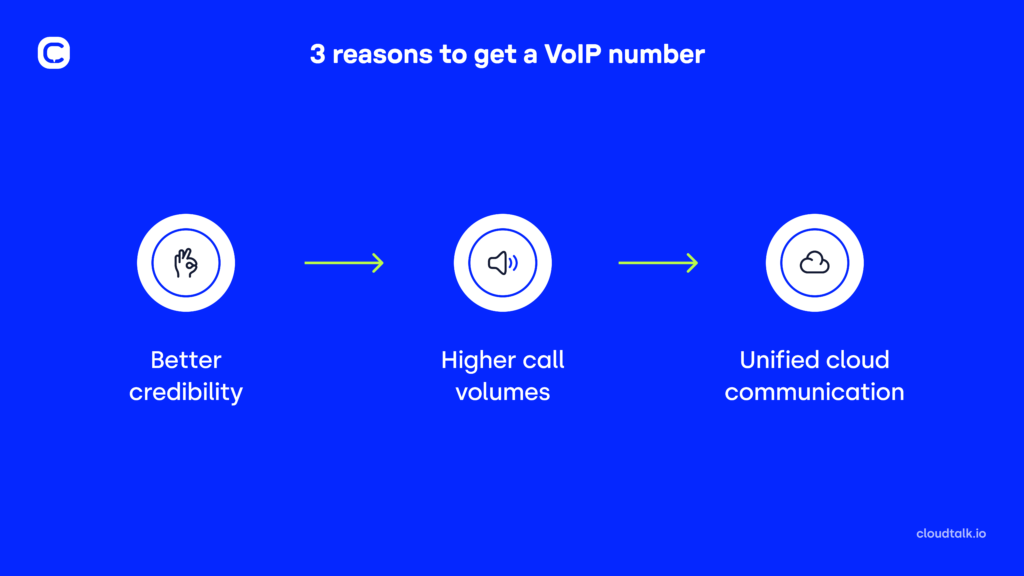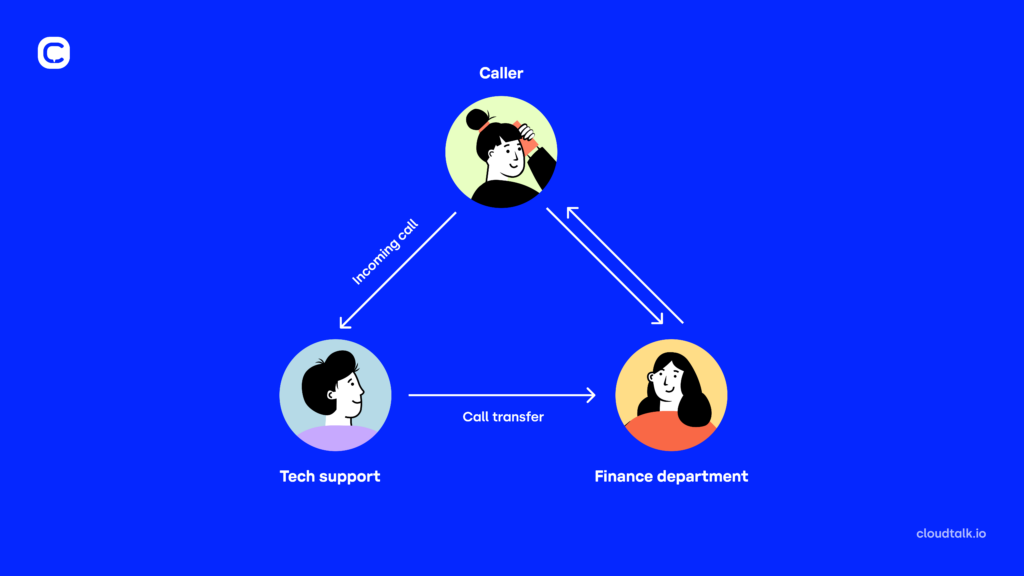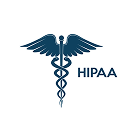What Is Call Recording, and How to Make the Most of It?
According to FindStack research, 73%* of all departments may have remote workers by 2028. This means that tracking your call center performance will likely become increasingly difficult.
Sure, you can extrapolate your sales and support performance from analytics and get information from agents, but it will never be as accurate as if you heard the calls yourself.
That’s difficult to do, especially when your employees are hundreds of miles away.
Luckily, there’s a little feature that can save you the trouble – call recording. By recording your calls, you don’t only make your performance management easier. You have an inexhaustible source of information on leads and customers that you can use anytime to make informed decisions, provide better support, close more deals, and maximize ROI.
In this blog, you’ll learn more about the benefits of call recording, how to choose the right recording software, and more.
Key Takeaways
- Call recording lets you directly hear customer interactions, providing valuable insights for your business.
- From quality assurance and compliance to enhanced training, call recording benefits various industries, including customer service, finance, healthcare, and more.
- To fully leverage call recording, select software that fits your needs, offers seamless integrations with existing systems, and supports scalability for future growth.
What is Call Recording?
Call recording is the process of capturing and storing audio interactions between two parties – agents and customers, in this case. The conversation is recorded, stored, and can be retrieved anytime for as long as you have it saved.
Call recording is an essential tool for various industries. Of course, call centers and customer-facing teams are among them. However, due to compliance and security, call recording is very important, mainly for institutions dealing with sensitive information, such as finance and healthcare.
Let’s take a deeper look at it:
What Industries Benefit From Call Recording?
Let’s take a look at which industries get the most out of call recording and why:
Customer service and sales
Call recording is critical for quality assurance, compliance, and overall monitoring. You can follow, analyze, and improve customer interactions, leading to stronger rapport, better cross-selling opportunities, more accurate service, easier agent training, and more.
Financial industry
In finance, call recording is crucial mainly for legal purposes, as the industry deals with sensitive information and peoples’ finances on a daily basis. Therefore, call recording helps avoid legal issues, settle disputes, support compliance, and prevent fraud.
Healthcare
Medical institutions like finance deal with sensitive information. For example, patient diagnoses. As we will discuss later, leaking these have serious consequences for both the institutions and their clients. Therefore, by recording calls, you are supporting compliance and security, as well as ensuring accurate patient data and improving healthcare.
Public safety sector
Call recording helps capture mission-critical information for various incidents and extract important details. An example would be police dispatching. A recorded 911 call can provide detectives with many clues for resolving cases. Or help emergency services identify the whereabouts of an injured person.
Governments
Public sector organizations use call recording to provide better accountability for their actions and keep up transparency, as well as for training, compliance, or data accuracy.
How Does Call Recording Work?
Now that you know call recording basics, there are 3 different methods of how to record a call – integrated, active, and passive.
Let’s discuss them:
Integrated Call Recording
Integrated call recording is directly embedded in your telephony system, such as VoIP telephony software.

You don’t have to buy any additional equipment for call recording. You just pay for a subscription. That is usually affordable, even for small businesses. For example, in CloudTalk, plans start at only $25 per user / month. As you’ll see later, this makes integrated call recording the most cost-efficient option.
The VoIP call recording mechanism is quite simple. The technology converts voice signals into digital data pockets. Those are then stored within the software and easily retrievable for analysis.
The recorded audio files are often compressed to save storage space and tagged with metadata like date, time, agent ID, or customer details for targeted search.
Call recording via VoIP also works hand in hand with other features. That enhances its capabilities and boosts efficiency. For example, as we mentioned, call tagging helps you sort out calls. Integration with external tools lets you automate workflow by syncing all data.
Call recording is also a great hub for now so popular AI features.
With AI-powered VoIP software, you can:
- Get your recording automatically transcribed
- Analyze customers’ sentiment
- Extract key topics
- Measure how much each call party speaks
Active Call Recording
Active call recording is much more common than the passive one we’ll discuss next. It can be a built-in feature in mobile phones or an external recording software for online calling platforms. As the name suggests, this type of call recording actively participates in your phone calls. It is a part of the conversation and “listens” to it.
An example: imagine you are on a Google Meets call. You see a special guest attending the meeting, a “participant” that is actually an external call recording software. It is there to capture the call separately from Google Meets recording.
You can also use call recording with a traditional telephony setup if you modify it with CTI (Computer Telephony Integration). This setup also requires additional telephone lines and interconnect lines from a telco provider to merge the telephony equipment with call recording equipment. That, of course, costs money.
Passive Call Recording
In the case of passive recording, the call recording system is a separate device that connects to telephone lines via a “high-impedance tap”. It doesn’t interact with calls in any way. In fact, your employees won’t even know you are using it, though we can debate how ethical that is
To control the recording, like stopping it or pressing a pause, you would have to enter a predefined sequence of numbers on the keypad via a separate desktop application.
What are the Benefits of Call Recording?
We hinted at many call recording benefits so far, and now it’s time to take a closer look at them. We split them into several categories based on the user type.
Let’s dive into it:
FOR AGENTS AND SALES REPS
#1 Build Strong Rapport
Talking to tens or even hundreds of customers daily is no picnic. To build a quality rapport, agents should focus on every single word. That’s close to impossible. It’s easy to overlook crucial information, especially if it sounds redundant.
Call center recording allows agents to re-listen to their calls, pick up on missed details, and prevent customers from repeating themselves.
For example, tech support agents can discover what type of device the customer is using, so they don’t have to ask again. They will look like attentive listeners, even if, originally, some details fell through the cracks.
As a result, agents build trust more easily, provide personalized service, and ensure strong relationships.
#2 Amplify Sales Methods
Sales is 50% skill and 50% psychology. In order to persuade someone and convert them, they need to feel understood. Previously, we talked about building rapport to personalize customer support. Now, let’s discover how it works for sales teams.
Call recording can help identify recurring patterns. Not only in general, such as common objections, but also individually. There may be phrases a lead likes to use. Maybe they always mention their son. Sales reps can use these seemingly insignificant details in their conversations and ensure a real bonding experience.
They can also identify major roadblocks, replicate winning strategies, and adjust them based on what works.
FOR MANAGERS AND SUPERVISORS
#1 Get Effective Insights to Service Quality
As a manager, you need to keep an eye on each customer interaction. But you cannot be present on each call. You also cannot take your team’s word for it, however trustworthy your employees are. Hearing things from one perspective is simply never objective.
Thanks to call recordings, managers can review calls, find out what works, and where’s the space for improvement. That’s a unique source of guidance not only for performance reviews but also for coaching.
#2 Fully Personalize Agent Training
Let’s tie up to the previous benefit. Call recording makes for an invaluable source of training opportunities. Not only can managers and supervisors create personalized sessions based on real bottlenecks, even for individuals, agents can also learn how most of us learn the best – through practical examples.
New agents or low performers can simply listen to their more senior colleagues and learn their methods from actual customer interactions. They’ll see how to build rapport, handle objections, connect with customers, and so on.
Agents will also feel more confident and happier, which reduces the extremely high call center turnover rate, reaching as much as 45%.
#3 Make Informed Decisions
Call Recording can help develop your business. It’s not only about agents’ behavior and effective selling techniques. Recordings provide insights into how customers are using your product or service. It serves their struggles, likes and wants on a silver plate, easily accessible for you to collect, analyze and implement.
Example: Let’s say you work in CloudTalk. An agent receives a complaint. And then they receive another one. And another one. Always the same thing – customers struggle to navigate the analytics. An annoying issue becomes a great opportunity. You contact the product team and just like that, a new Analytics interface is under preparation. All based on recorded customer complaints.
FOR MARKETING
#1 Build Content Strategy That Converts
It’s not a surprise that call recording is a valuable source for marketers, too, since marketing teams are also mostly revenue oriented. But it’s especially useful for SEO and Content teams.
Here’s how call recording can help build better content strategy:
- It provides relevant social proofs to incorporate in customer stories and general content.
- It lets you craft content closer to actual customer needs by providing real pain points.
- It helps to focus more accurately on leads ready to convert by getting you closer to actual BOFU (bottom of the funnel) concerns.
#2 Remove Guesswork From Campaigns
Since call recording helps to better understand the different types of leads, it shows marketing teams how the actual customer needs stack up against their fabricated buyer persona. It provides a realistic overview of the target audience and what they want to hear to actually make a purchase.
Then, it’s enough to find creative ways to address the pain points in marketing campaigns, target the right audience with the right words, and wait for those MQLs to start growing.
OVERALL
#1 Ensure Compliance
Customer disputes and misunderstandings happen in every company. They are unavoidable but easily solvable if you capture and store the particular conversation. This recording will then be your first line of difference.
You can easily prove your innocence in issues like supposed customer privacy breaches, inappropriate behavior, etc. Or a customer can prove you guilty. Depending on the situation.
#2 Enforce Security
This one is less connected to call recording itself and more connected to the means of recording them. As we mentioned, data breaches in medical and financial industries or governmental organizations may seriously affect all parties involved.
And what’s a better way to obtain leverage against someone than their own words?
What’s more, security breaches bring an inconspicuous but devastating side effect – outages. According to McKinsey, organizations increasingly underestimate the negative impact of outages on customer satisfaction. In the meantime, a typical company faces up to five major outages per year, costing them millions of dollars.
That’s why it’s extremely important to get a calling solution where the access to the recording is encrypted and protected.
In CloudTalk, we have a 24/7 security monitoring team, regular software updates, and other safety measures like multi-factor authentication or Single Sign-On.
Secure your communication with CloudTalk.
Legal Considerations for Call Recording
Since it means obtaining someone else’s personal information, it isn’t a surprise that there are many rules to follow when recording a call.
The basic one is that in order to record a call with someone, you need to get their permission. You probably know that famous sentence at the beginning of each customer support call: “We’d like to inform you that this phone call is being recorded for quality and compliance purposes.”
Now, we will take a deeper look at this specific call recording rule and many more.
Before we start, though, we must state that this guide is not a substitute for legal advice. We strongly recommend consulting your lawyer on this matter.
With that in mind, let’s talk about call recording compliance laws in different regions:
#1 United States
Since the U.S. is a complex country consisting of many independent states, it is no surprise that call recording laws get a bit complicated.
The regulations widely differ from state to state, from one federal rule to another.
Yet, we can tell you the U.S. states divide into two groups:
- “One Party Consent” states: You must notify and get direct consent from at least one party on the call. The other person gives consent by staying on the call.
- “Two Party Consent” states: also called “All Party Consent” states, these regions require the direct consent of all parties in the call before recording the conversation. If any of the parties refuses to give their consent, the call cannot be recorded.
Majority of the U.S. states (38) deployed the “One Party Consent” rule.
Yet, approximately 13 states chose to require all parties’ consent.
Here’s a list:
- California,
- Connecticut,
- Delaware,
- Florida,
- Illinois,
- Maryland,
- Massachusetts,
- Michigan,
- Montana,
- Nevada,
- New Hampshire,
- Pennsylvania,
- Washington State.
#2 United Kingdom
There are several laws governing call recording practices in the U.K. Unless you can guarantee that the call will not be shared with any other party, it’s best to consider the United Kingdom a “Two Party Consent” country.
#3 Europe
The European privacy regulations, such as GDPR or ePrivacy Regulation, require consent of all parties for the call. Call participants must be informed about the recording, but also receive an opt-in option to refuse recording while staying on the call. What’s more, GDPR requires a valid and legal reason for recording a phone call.
Interesting fact: In Germany, not obtaining both participants’ consent is considered a criminal offense under Section 201 of the German Criminal Code.
#4 Canada
Canada made it easy on its citizens. The country has a single, unified set of call recording rules, making it easier to navigate. Specifically, it is the electronic privacy law (PIPEDA).
Canada also chose an “all-parties consent” approach. You need to notify the caller about the following:
- An intention to record the conversation
- A purpose the recording will be used for
- A fact that the call will only be recorded if both parties agree
An important piece of advice: We mainly discussed how important compliance is in regards to customers. But you shouldn’t forget that your agents will also be recorded, and since most of the countries chose a two-party consent approach, they should always be aware. It is not only required but also ethical and respectful.
Regulations by Industries
- Financial industry: Two important compliance rules apply to financial institutions – PCI and MIFiD-II. PCI is related to bank cards. It sets rules on what can and can’t be recorded and what requires additional authorization. What can be recorded and retained in general falls under MIFiD-II compliance.
- Healthcare industry: First, there’s a PHI compliance rule that sets which medical information is forbidden to collect. The confidentiality of a person’s health state information falls under HIPPA.
Key Features of Call Recording With VoIP
We told you that Call Recording in VoIP telephony software comes with various handy features that amplify your support and sales performance.
Here are the most important ones:
- Call Monitoring: In addition to call recording, you can also listen to your calls in real-time. You may identify performance issues and gain training inspiration but also jump in to help, discussing with either only the agent or both the agent and the customer.
- 3-Way Calling: This tool is a part of call monitoring and allows supervisors or senior agents to do just what we said above – join phone calls and offer assistance. With 3-way calling, you talk to both the agent and customer. It boosts your professionalism and increases the First Call Resolution Rate (FCR).
- Call Transfer: Agents can transfer phone calls to professionals best equipped to deal with the issues. This ensures that each caller gets prompt help and the right advice. As a result, you are boosting FCR and decreasing Call Handling Time.

- Analytics: Information retrieved from call recordings would be for nothing if you cannot confirm your findings with actual data. Analytics give you an overview of everything going on in your call center, from individual agent’s performance to high-end KPIs and company-wide goals.
- AI features: The tools closely connected to call recording to amplify your human agent’s potential. We have already mentioned a few. For example, call transcription to find desired information more easily or emotion analysis to know how your customers feel about your service. We also told you about the talk-to-listen ratio that shows you a percentage of the time the agent and customers spoke.
- Interactive Voice Response (IVR): This call center tool allows you to fully personalize your customers’ calling journey. You can set an exact path that calls will take, routing them to agents with specific language skills, in correct time zones, redirecting them to voicemail, and more. Like this, you’ll never miss on a single customer interaction while offering personalized support.
Best Practices of Effective Call Recording
Call Recording has its legal rules, but it also has those that aren’t enforced by authorities. We can call them “call recording ethics and success principles”. They not only support customers’ trust but also help you get the best out of the call recording.
#1 Don’t Record Sensitive Information
Avoid asking anything that can harm the customer in case of a data leak unless it’s absolutely necessary.
There are two potential solutions for this:
- Customers should get an option to input personal information on the keypad of their personal devices.
- If you work in an industry like finance, there’s some special tech to use. You can utilize the PCI payment system that will automatically stop the recording when customers are sharing sensitive information.
#2 Get a Dedicated Team for Data Management
Creating a team of analysts who are exclusively looking after call recording and interpreting data further enhances the security. It also supports efficiency, since they can also help with pulling out relevant data and searching for patterns. Something managers often don’t have time for and agents often don’t have competency for.
A word of caution: Besides the data management team, make sure that only those people have access to call recordings who really need it.
#3 Explain Ethical Principles to Your Agents
Agents cannot follow the call recording ethics when they aren’t taught what it is and trained to apply it.
Explain what principles they should follow and when. It will help them better handle the calls and, once more, add a layer of protection to customers’ data.
Here is what agents should know:
- Be honest about the purpose of call recording: We mentioned that agents should always explain why the call is being recorded, who will have access to the recording, and why someone may contact them regarding the recorded data.
- Avoid gossiping: Agents should avoid talking about customers and their issues outside the office. They should use made-up names if they have to share information in a public area.
Don’t leave important information around: Cell phones and other devices listen to us. Agents should keep them away from the space where they make calls. Even a pen and paper can be trouble in the wrong hands, so it should be securely locked in a drawer.
Pro tip: Let agents use call scripts to avoid saying anything inappropriate or illegal.
CloudTalk allows you to create call scripts as a part of our Campaigns feature. It also allows agents to securely write notes directly to the call scripts interface so only people with credentials can access them.
#4 Use Top-Quality Recording Software
It definitely doesn’t look trustworthy when customers can barely hear you. An unprofessional setup can make them fear that they are entrusting important information to a fraudulent organization.
High-quality audio and connectivity are, therefore, a must.
How to Choose the Right Call Recording Solution
Now that you know all there is about recording your calls, let’s look at how to choose the most suitable software. As we mentioned, choosing the right one is crucial to truly benefit from call recording.
#1 Evaluate Your Needs
Make sure that the call center recording solution of your choice aligns with your organization’s overall strategy and goals. Wrong tools can result in inefficiencies and additional costs at best. In the worst-case scenario, it can turn out to be totally useless.
Therefore, when choosing your software, consider:
- Type of calls you make (inbound, outbound)
- The volume of your calls
- For how long you need to keep the recording
- The level of security you need
- The purpose of recording calls
The last point is especially important, since every reason for recording requires a specific set of tools.Let’s say that you need it for training and quality assurance purposes. It’s important to also have features like above mentioned call monitoring, proper analytics, agent or group reporting, and others.
Or, maybe you are leading a business with clients who require a high level of confidentiality, and you need call recording for compliance. You need to be looking at proper security tools, encryption methods, and a dedicated team who’s taking care of the data safety.
#2 Choose The Best Value for Money
Yes, you need software with proper security and features, but that doesn’t mean that you have to break a bank. Many call recording software providers are absolutely affordable, even for small businesses. All you have to do is pay a small monthly fee per user and invest in basic equipment – a device to call from and optionally, a headset.
Also, when purchasing a software, you must consider which specific plan to use based on your requirements and budget. The more expensive ones contain more features but if you don’t need most of them, you’ll end up overpaying. The cheaper plans are more cost efficient, but may miss some functionalities if you need a more complex solution.
Get a call recording software for all business sizes and budgets.
#3 Consider Future Plans
There are companies that want to keep their small-business status forever. What’s great if it’s a small family business. But most companies aim for growth.
Or, on the contrary, it may happen that businesses have to de-escalate operations and reduce the size of their teams.
Whichever scenario applies to you, you need to keep these potential changes in mind, because there is no certainty in the business world. It’s necessary to choose a solution that can adapt to fluctuations. Therefore, scalability is crucial.
Let’s see an example:
You started your call center with 20 agents. First, the business is blooming! Your customer count keeps growing and you need more hands on deck. You’ll hire 10 agents. Instead of changing the entire software, you simply contact your provider and add more seats seamlessly. Your new agents will be chatting with customers in no time.
But later on, bad economic times come and unfortunately, you need to let a few of your people go. Instead of having to deal with software change in the middle of anyways difficult times, you once again, jump on the call and remove those unnecessary seats instead of paying for something you don’t use.
#4 Get Proper Integrations
When you have been in a business for some time, you know how much time and effort proper automation can save. Seamlessly integrating business call recording software with your 3rd party apps is a must.
We already mentioned that thanks to integration, you can synchronize workflow between your calling software and any CRM or other tool you are using. Therefore, you can see the call recordings there without having to get back to your calling software every time you need to access them.
And, of course, the recordings aren’t the only thing that gets synced. Your contacts, call details, and notes will all be added automatically and integrated, saving you time and eliminating tedious manual data input. Therefore, you’ll support overall performance, workflow, and agent satisfaction.
Sync CloudTalk with 30+ business tools you love.
Start Capturing Your Conversations
In an increasingly remote and digital world, managing and optimizing your call center performance can be challenging. Call recording is a crucial tool to bridge this gap, offering more than an easy way of tracking service quality. It is also a treasure trove of actionable insights.
By recording your calls, you can directly hear your customers and leads’ issues, make informed decisions, improve support, close more deals, and maximize ROI.
From customer service and sales to finance, healthcare, public safety, and government sectors, the benefits of call recording are manifold. However, to truly harness its power, choosing the right solution tailored to your needs is vital. Look for software that offers seamless integrations with your existing systems to streamline workflows and enhance productivity. Implementing a robust call recording system transforms recordings into a strategic asset that drives growth, customer satisfaction, and business success.
Ready to elevate your call center performance?
Try CloudTalk and find the perfect solution for your business today!
FAQs About Call Center Analysis
Who Should Use Call Recording?
Call recording is ideal for customer service, finance, healthcare, public safety, and government industries. It aids in quality assurance, compliance with legal standards, training purposes, and data accuracy. Organizations can benefit from recorded calls by improving customer interactions, resolving disputes, and gaining insights for process improvements.
What is the best call recording app?
The best call recording app varies based on specific needs, but CloudTalk is a highly recommended option. It provides seamless integrations, scalability, and advanced features like call monitoring, detailed analytics, and AI-powered tools for transcriptions and sentiment analysis. CloudTalk supports both inbound and outbound call recording, making it a versatile solution for businesses of all sizes.
Can you record a call on your phone?
Yes, you can record calls on your phone using built-in features or third-party apps. Many modern smartphones have native call recording functions, while numerous apps available on app stores offer additional functionalities. It is crucial to comply with legal requirements, such as obtaining consent from all parties involved in the call, to ensure lawful recording practices.























